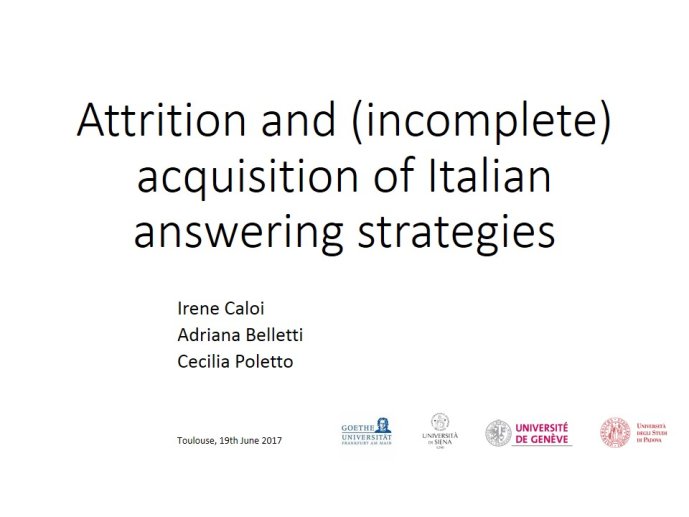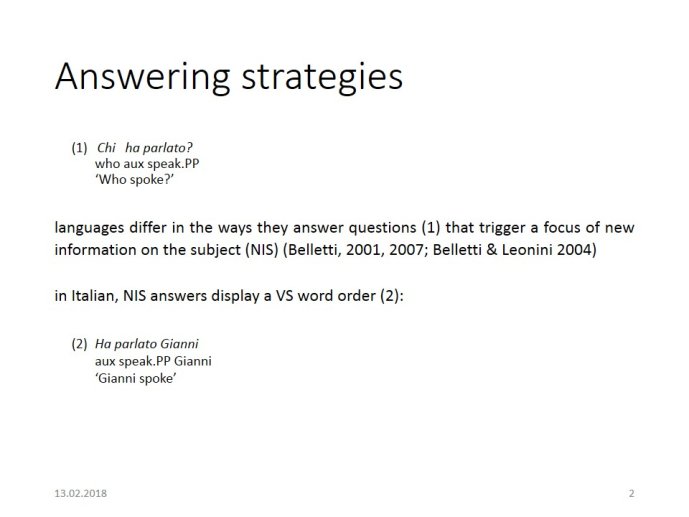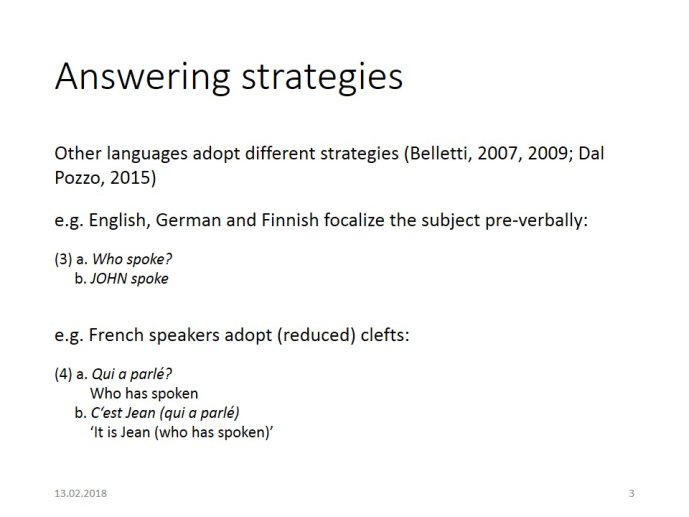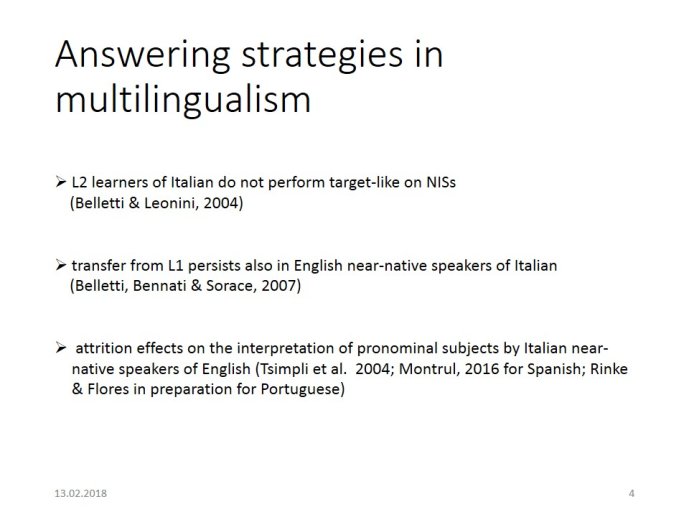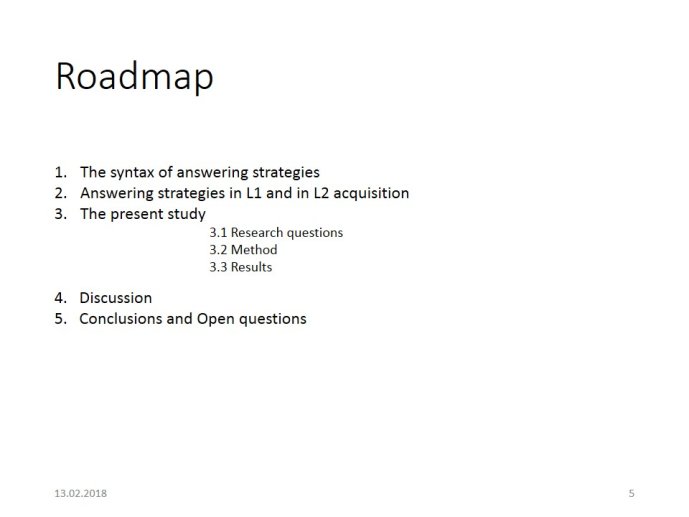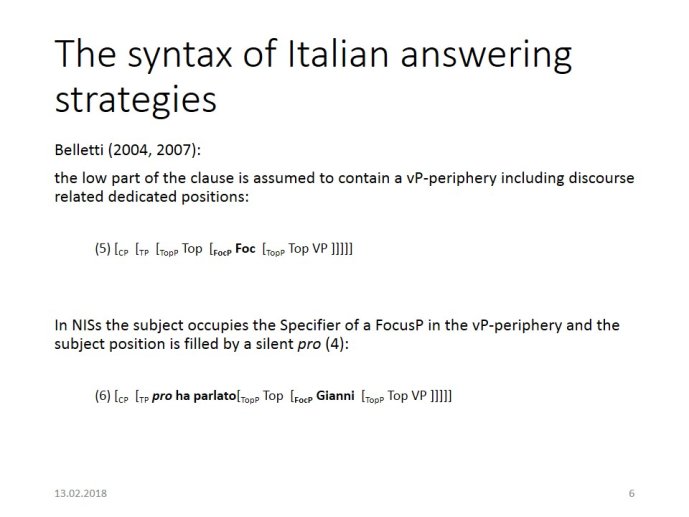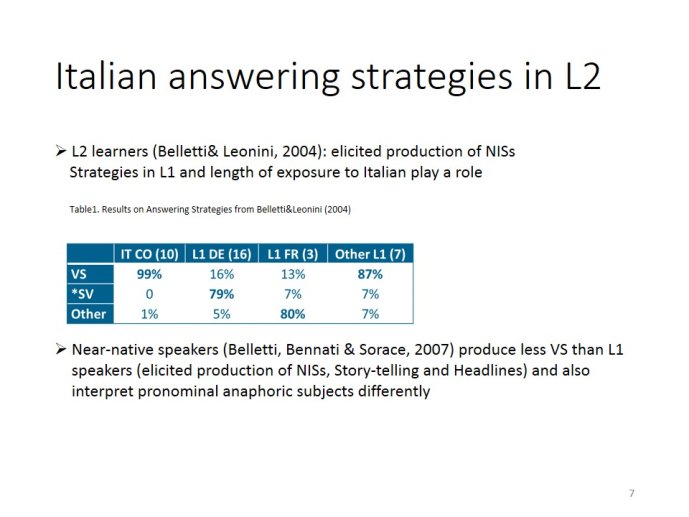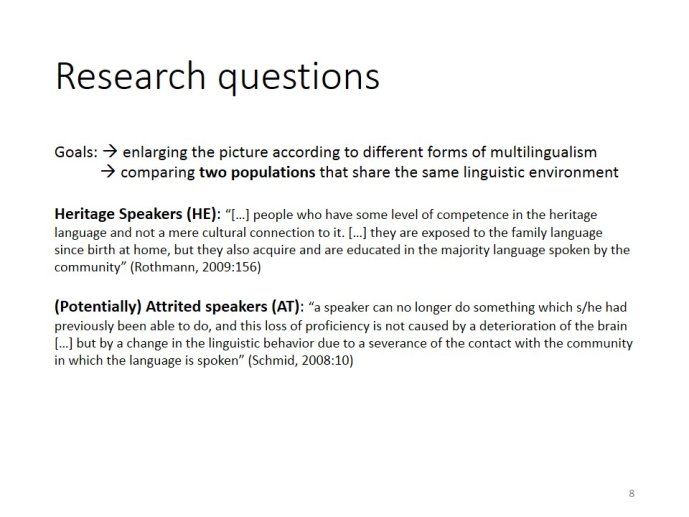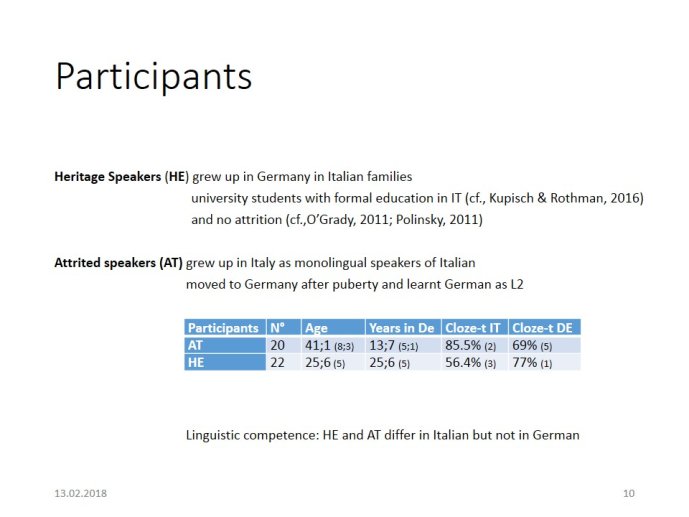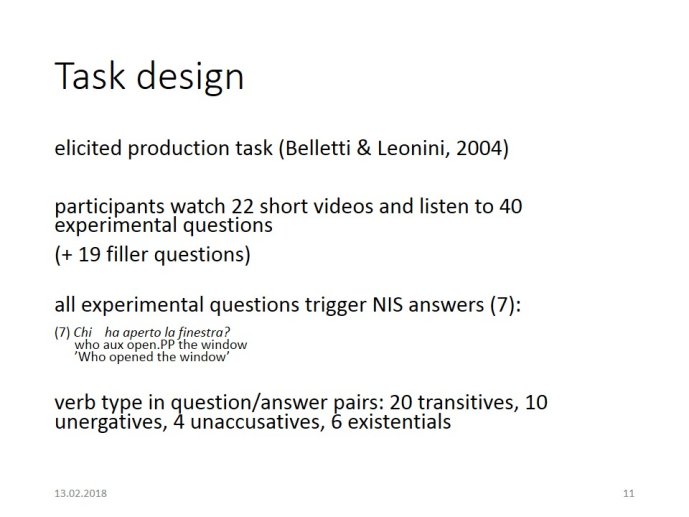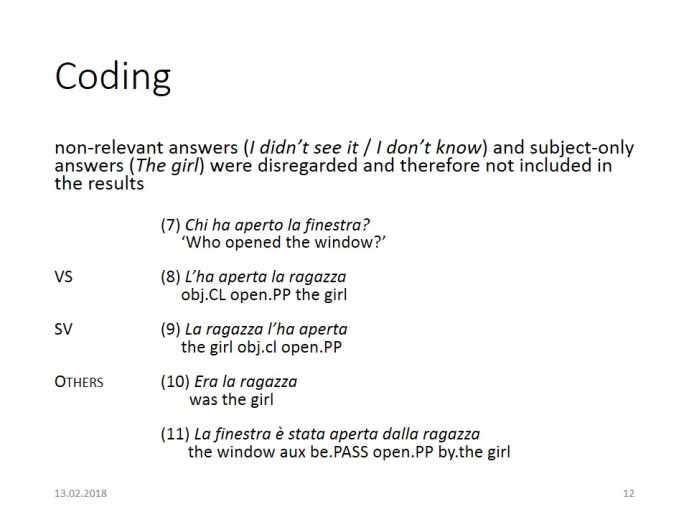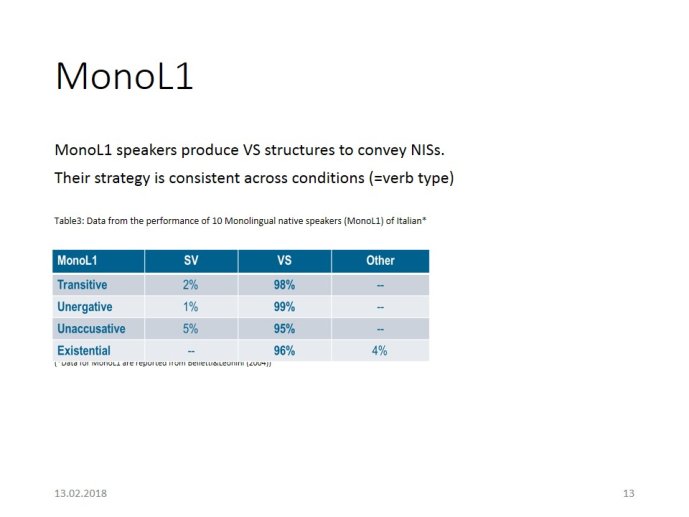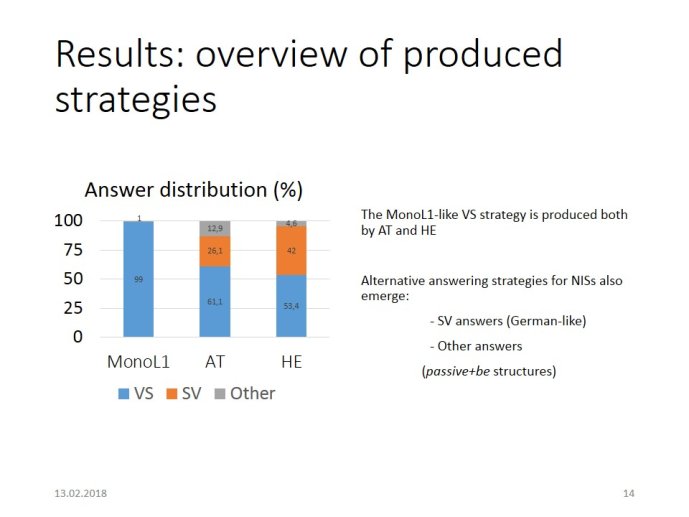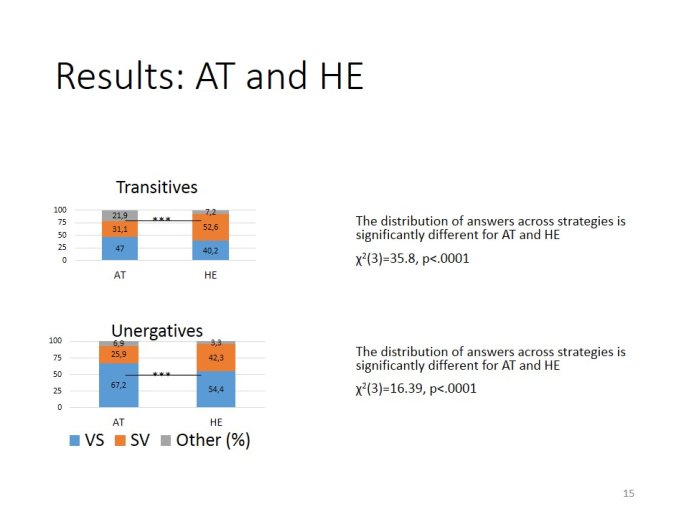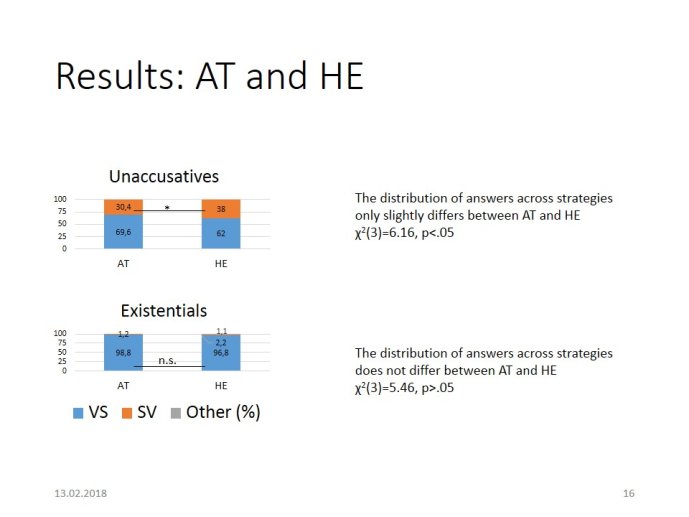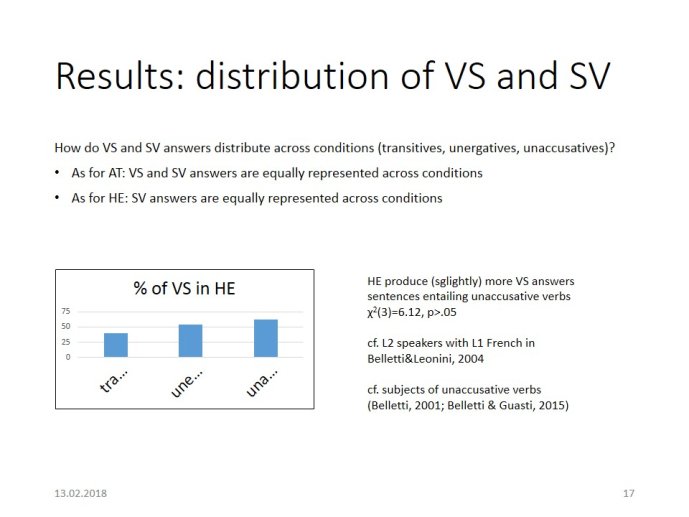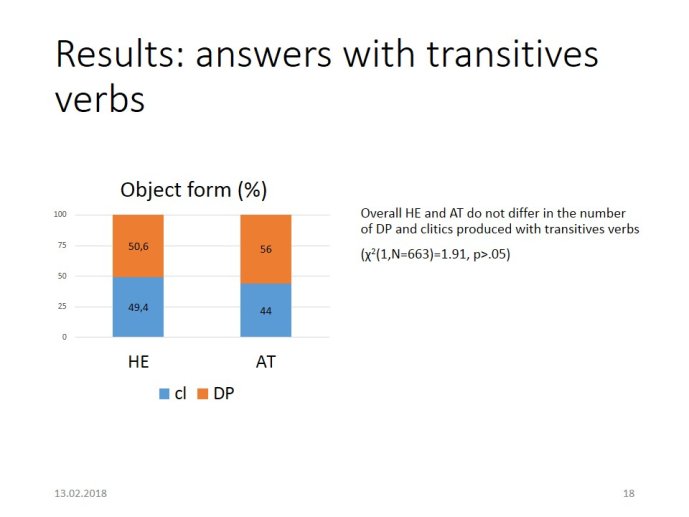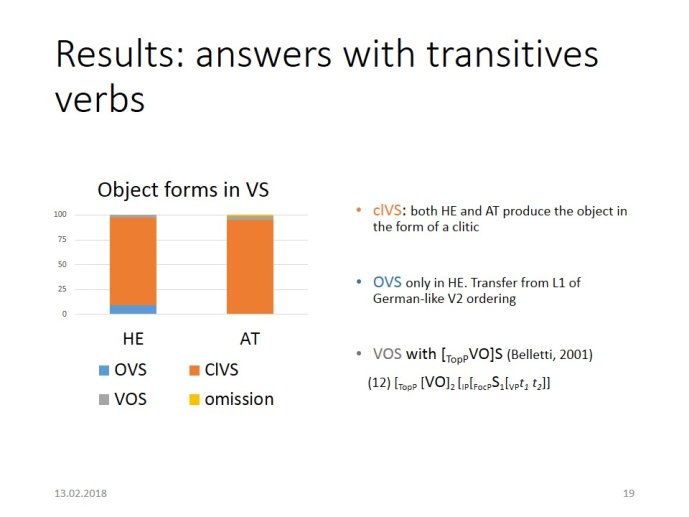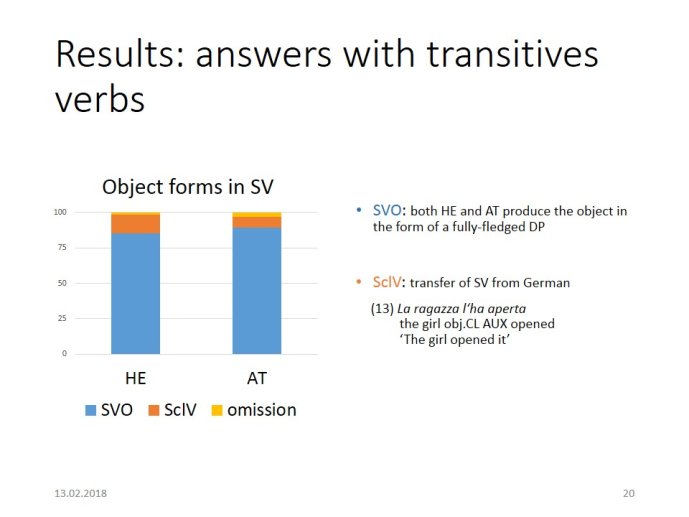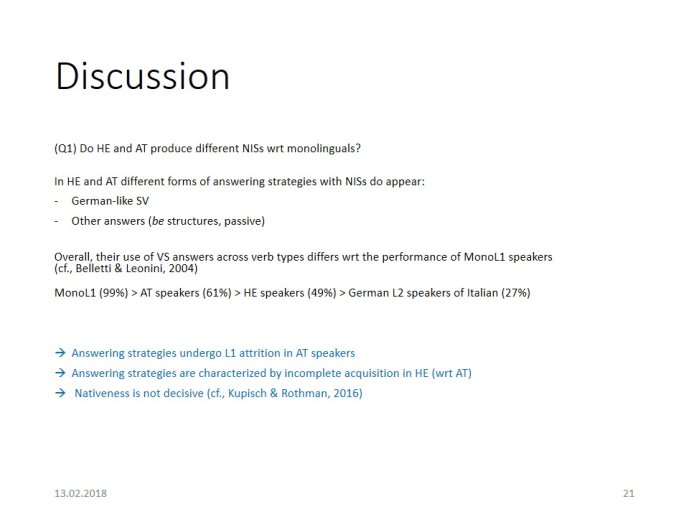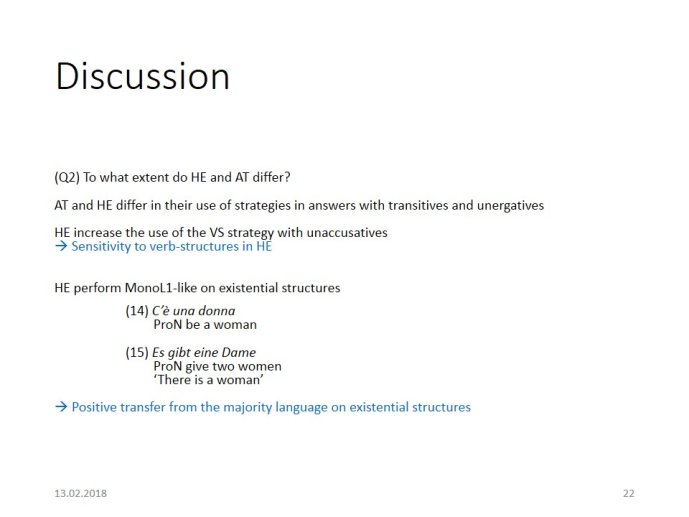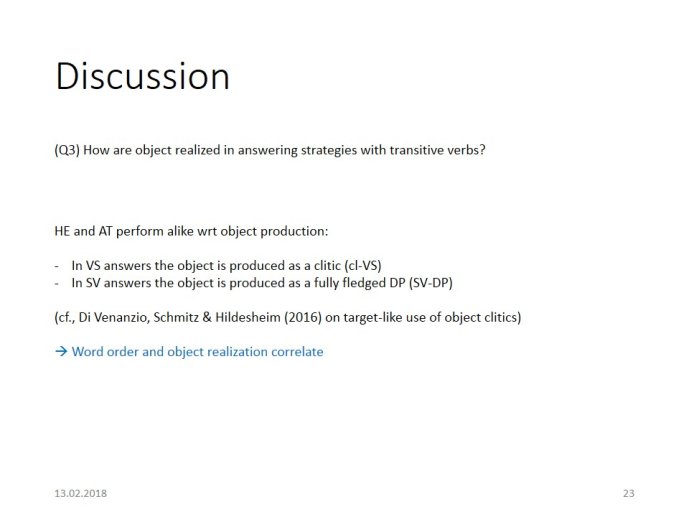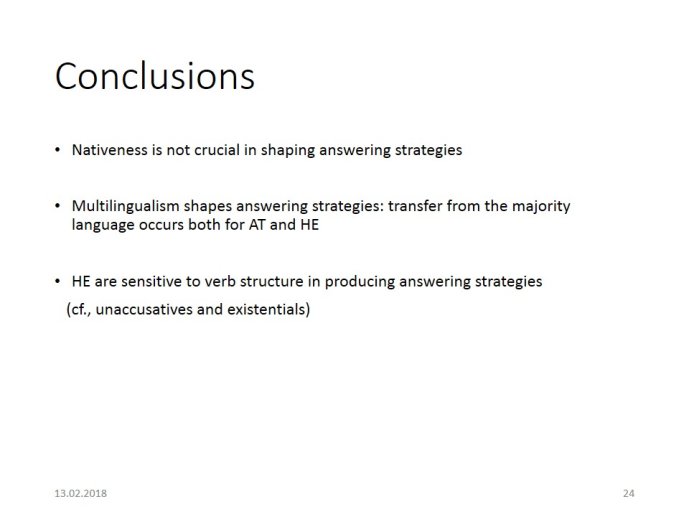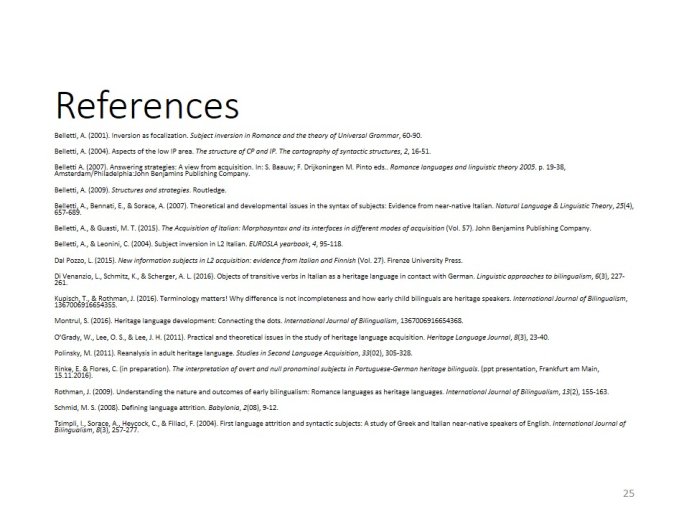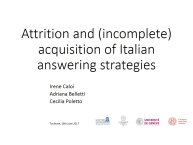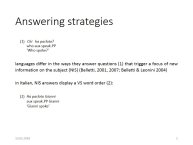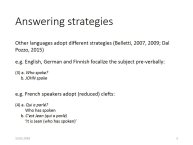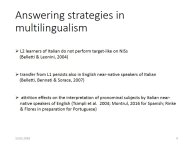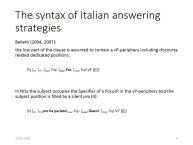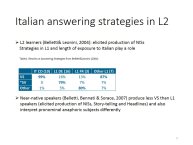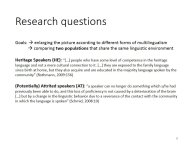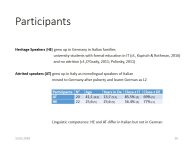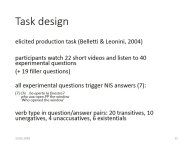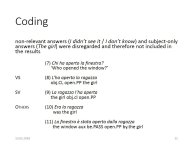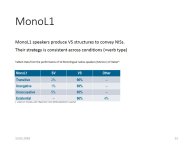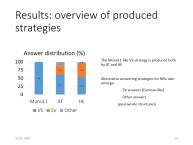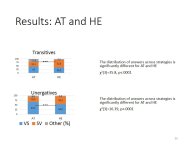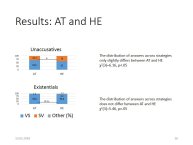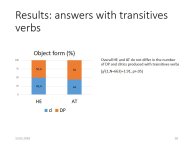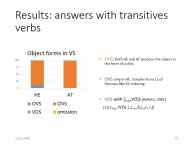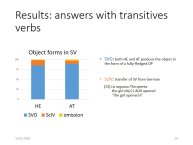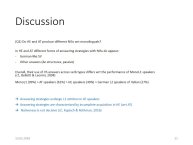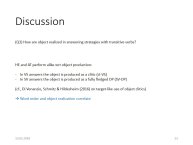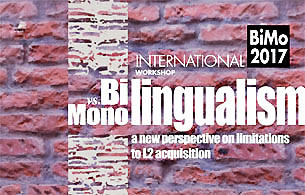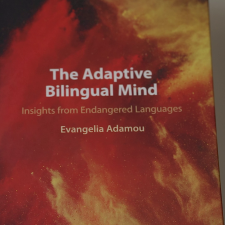Notice
Attrition and (incomplete) acquisition of Italian answering strategies / Irene Caloi
- document 1 document 2 document 3
- niveau 1 niveau 2 niveau 3
Descriptif
Attrition and (incomplete) acquisition of Italian answering strategies / Irene Caloi, in colloque "Bilingualism vs. monolingualism: a new perspective on limitations to L2 acquisition" organisé par lelaboratoire Octogone-Lordat (Université Toulouse 2) sous la responsabilité de Barbara Köpke (UT2J), Holger Hopp (Technische Universität Braunschweig), Tanja Kupisch (Universität Konstanz), Université Toulouse Jean Jaurès, 19-20 juin 2017.
We comparespeaker undergoing L1 attrition (AT; L1: Italian;L2: German) and heritagespeakers (HE; heritage language: Italian; majority language: German) in orderto analyse how different forms of multilingual knowledge shape syntacticphenomena that are the reflex of discourse related conditions, at thesyntax-discourse interface. One such reflex is the word order necessary toexpress a given discourse content, such as New Information Subjects (NIS) in answers to questions thatprompt the identification of the clause subject. Belletti (2007)showed that Italiananswers to these questions displaythe word order VS,thereby realizing the NIS in the immediatevP periphery (1); in contrast, German keeps the SVorder and focalizes the NIS prosodically (2):
(1) Chi è arrivato? / È arrivato Gianni
Who is arrived / is arrived Gianni
(2) Wer ist angekommen? / Ján ist angekommen
who is arrived / Jan is arrived
Thestructure is investigated in Italian through a production task consisting of 22videos which trigger NISs answers through 40 questions (20 transitives, 10unergatives, 4 unaccusatives, 6 existential structures).
Datareveal that multilingual proficiency determines an increased variety of adoptedanswering strategies. AT and HE perform alike but crucially differently fromItalian native speakers (MonoL1); they match the performance of MonoL1 speakersonly on existential structures, for which both Italian and German display VSstructures.
AT speakers show attrition in the form of a less consistent useof VS structures with respect to MonoL1.AT speakers produce alternative strategies: German-like SV structures with transitives (31.1%), unergatives(25.9%), and unaccusatives (31.4%); copular (be) structures with transitives (4.2%) and unergatives (6.9%); andpassives with transitive verbs (17.7%).
HEspeakers produce the native-like VS structure more successfully withunergatives (53.9%) and unaccusatives (62.0%) than with transitives (40.2%).Transfer of SV structures from German is preferred in transitive structures(52.6%), in combination with post-verbal lexical objects, otherwise realizedas clitics in VS structures. This suggests that the presenceof the lexical object plays a crucialrole.
Results reveal that NISs undergoattrition (in AT) or incomplete acquisition (in HE), thus identifying a new domainin which phenomena at the syntax-discourse interface are shapedby multilingual proficiency, similarlyto what has been discussedby Sorace (2004)and by Belletti, Bennati & Sorace (2007) in the study of differentmultilingual populations of L2 near-native speakers of Italian.
Thème
Documentation
Références bibliographiques
Belletti, A. (2001). Inversion as focalization. Subject inversion in Romance and the theory of Universal Grammar, 60-90.
Belletti, A. (2004). Aspects of the low IP area. The structure of CP and IP. The cartography of syntactic structures, 2, 16-51.
Belletti A. (2007). Answering strategies: A view from acquisition. In: S. Baauw; F. Drijkoningen M. Pinto eds.. Romance languages and linguistic theory 2005. p. 19-38, Amsterdam/Philadelphia:John Benjamins Publishing Company.
Belletti, A. (2009). Structures and strategies. Routledge.
Belletti, A., Bennati, E., & Sorace, A. (2007). Theoretical and developmental issues in the syntax of subjects: Evidence from near-native Italian. Natural Language & Linguistic Theory, 25(4), 657-689.
Belletti, A., & Guasti, M. T. (2015). The Acquisition of Italian: Morphosyntax and its interfaces in different modes of acquisition (Vol. 57). John Benjamins Publishing Company.
Belletti, A., & Leonini, C. (2004). Subject inversion in L2 Italian. EUROSLA yearbook, 4, 95-118.
Caloi, Irene (2017). Additive focus particles in German-speaking learners of Italian as L2. In De Cesare, A. M., Andorno, C. M., Focus on additivity. Multiperspective and multifaceted views, Amsterdam, John Benjamins Publishing Company, 237-263.
Dal Pozzo, L. (2015). New information subjects in L2 acquisition: evidence from Italian and Finnish (Vol. 27). Firenze University Press.
Di Venanzio, L., Schmitz, K., & Scherger, A. L. (2016). Objects of transitive verbs in Italian as a heritage language in contact with German. Linguistic approaches to bilingualism, 6(3), 227-261.
Kupisch, T., & Rothman, J. (2016). Terminology matters! Why difference is not incompleteness and how early child bilinguals are heritage speakers. International Journal of Bilingualism, 1367006916654355.
Montrul, S. (2016). Heritage language development: Connecting the dots. International Journal of Bilingualism, 1367006916654368.
O’Grady, W., Lee, O. S., & Lee, J. H. (2011). Practical and theoretical issues in the study of heritage language acquisition. Heritage Language Journal, 8(3), 23-40.
Polinsky, M. (2011). Reanalysis in adult heritage language. Studies in Second Language Acquisition, 33(02), 305-328.
Rinke, E. & Flores, C. (in preparation). The interpretation of overt and null pronominal subjects in Portuguese-German heritage bilinguals. (ppt presentation, Frankfurt am Main, 15.11.2016).
Rothman, J. (2009). Understanding the nature and outcomes of early bilingualism: Romance languages as heritage languages. International Journal of Bilingualism, 13(2), 155-163.
Schmid, M. S. (2008). Defining language attrition. Babylonia, 2(08), 9-12.
Tsimpli, I., Sorace, A., Heycock, C., & Filiaci, F. (2004). First language attrition and syntactic subjects: A study of Greek and Italian near-native speakers of English. International Journal of Bilingualism, 8(3), 257-277.
Dans la même collection
-
On Qualitative Differences between Types of Language Acquisition / Jürgen Meisel
MeiselJürgen M.On Qualitative Differences between Types of Language Acquisition / Jürgen Meisel, in colloque "Bilingualism vs. monolingualism: a new perspective on limitations to L2 acquisition" organisé par le
-
Monolingual and multilingual learners of French. What are the effects of language background on spe…
BontempsMarieMonolingual and multilingual learners of French. What are the effects of language background on spelling? / Marie Bontemps
-
Do temporarily induced code-switching modes alternate executive performance in late sequential bili…
Do temporarily induced code-switching modes alternate executive performance in late sequential bilinguals?
-
Processing variability in L2 learning: insights from articulatory training / Natalia Kartushina, Cl…
Processing variability in L2 learning: insights from articulatory training / Natalia Kartushina, Clara Martin
-
Age-related effects on language control and executive control: a behavioral-electrophysiological in…
MassaÉmilieAge-related effects on language control and executive control: a behavioral-electrophysiological investigation / Émilie Massa
-
Language, Development and the Bilingual Brain / Arturo E. Hernandez
HernandezArturo E.Language, Development and the Bilingual Brain / Arturo E. Hernandez, in colloque "Bilingualism vs. monolingualism: a new perspective on limitations to L2 acquisition" organisé par le laboratoire
-
Trilingual effects at the microstructure and macrostructure levels in children’s narratives / Mihae…
PirvulescuMihaelaTrilingual effects at the microstructure and macrostructure levels in children’s narratives / Mihaela Pirvulescu, in colloque "Bilingualism vs. monolingualism: a new perspective on limitations to L2
-
Language Processing in Bilinguals: Distinguishing Early Sequential from Simultaneous / Laura Sabour…
SabourinLauraLanguage Processing in Bilinguals: Distinguishing Early Sequential from Simultaneous / Laura Sabourin, Santa Vinerte, in colloque "Bilingualism vs. monolingualism: a new perspective on limitations to
-
Implicit causality as a predictive cue in child L1 and adult L2 processing of German: Evidence from…
Implicit causality as a predictive cue in child L1 and adult L2 processing of German: Evidence from visual-world eyetracking / Judith Schlenter
-
Cross-linguistic influence at the feature-level ? Evidence from Dutch-German bilingual preschoolers…
Cross-linguistic influence at the feature-level ? Evidence from Dutch-German bilingual preschoolers. How bilinguals are more monolingual-like than assumed / Antje Stoehr
-
Subject position in heritage Spanish in the Netherlands and the US: a case for cross-linguistic inf…
Subject position in heritage Spanish in the Netherlands and the US: a case for cross-linguistic influence / Brechje van Osch, in colloque "Bilingualism vs. monolingualism: a new perspective on
-
Can French-English bilinguals process verb-particle constructions in a native-like manner? A self-p…
Can French-English bilinguals process verb-particle constructions in a native-like manner? A self-paced reading study / Alexandre Herbay, in colloque "Bilingualism vs. monolingualism: a new
Sur le même thème
-
The Adaptive Bilingual Mind
AdamouEvangeliaLa chercheuse Evangelia Adamou (LACITO) présente son ouvrage "The Adaptive Bilingual Mind" (2021, Cambridge University Press).
-
On Qualitative Differences between Types of Language Acquisition / Jürgen Meisel
MeiselJürgen M.On Qualitative Differences between Types of Language Acquisition / Jürgen Meisel, in colloque "Bilingualism vs. monolingualism: a new perspective on limitations to L2 acquisition" organisé par le
-
Do temporarily induced code-switching modes alternate executive performance in late sequential bili…
Do temporarily induced code-switching modes alternate executive performance in late sequential bilinguals?
-
Processing variability in L2 learning: insights from articulatory training / Natalia Kartushina, Cl…
Processing variability in L2 learning: insights from articulatory training / Natalia Kartushina, Clara Martin
-
Language, Development and the Bilingual Brain / Arturo E. Hernandez
HernandezArturo E.Language, Development and the Bilingual Brain / Arturo E. Hernandez, in colloque "Bilingualism vs. monolingualism: a new perspective on limitations to L2 acquisition" organisé par le laboratoire
-
Language Processing in Bilinguals: Distinguishing Early Sequential from Simultaneous / Laura Sabour…
SabourinLauraLanguage Processing in Bilinguals: Distinguishing Early Sequential from Simultaneous / Laura Sabourin, Santa Vinerte, in colloque "Bilingualism vs. monolingualism: a new perspective on limitations to
-
Implicit causality as a predictive cue in child L1 and adult L2 processing of German: Evidence from…
Implicit causality as a predictive cue in child L1 and adult L2 processing of German: Evidence from visual-world eyetracking / Judith Schlenter
-
Subject position in heritage Spanish in the Netherlands and the US: a case for cross-linguistic inf…
Subject position in heritage Spanish in the Netherlands and the US: a case for cross-linguistic influence / Brechje van Osch, in colloque "Bilingualism vs. monolingualism: a new perspective on
-
Can French-English bilinguals process verb-particle constructions in a native-like manner? A self-p…
Can French-English bilinguals process verb-particle constructions in a native-like manner? A self-paced reading study / Alexandre Herbay, in colloque "Bilingualism vs. monolingualism: a new
-
Transfer and derivational complexity in the wh-movement of heritage speakers and L2 learners: A bid…
Transfer and derivational complexity in the wh-movement of heritage speakers and L2 learners: A bidirectional study / Holger Hopp, in colloque "Bilingualism vs. monolingualism: a new perspective on
-
Bilinguismes et compliance phonique
JEP-TALN-RECITAL 2016 - Vendredi 8 juillet 2016 Session commune JEP/TALN 3 Bilinguismes et compliance phonique Marie Philippart de Foy, Véronique Delvaux, Kathy Huet, Myriam Piccaluga, Rima Rabeh and
-
Les catégories grammaticales dans la construction du bilinguisme
LauneyMichelLes catégories grammaticales dans la construction du bilinguisme (avec focus sur la catégorie de la personne

